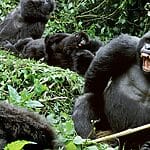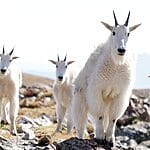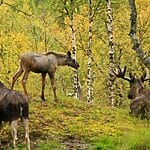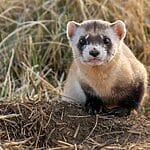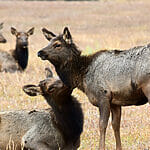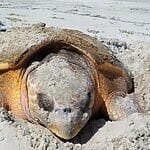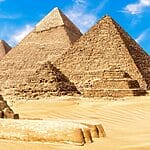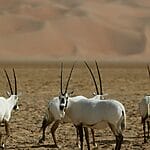8 Interesting Animals in Denali National Park – You Might Not Know
Do you know that you can discover a wide range of interesting animals in Denali National Park. The national park’s rich wildlife includes 39 species of mammals, 169 species of birds, 14 species of fish, and only one species of amphibian.
The Denali National Park created in 1917, stands as a majestic preserve within the Alaska Range, showcasing North America’s highest peak, Denali. This national park, spanning over six million acres, offers a breathtaking canvas of diverse landscapes, from dense forests near the park entrance to the vast, open tundra.
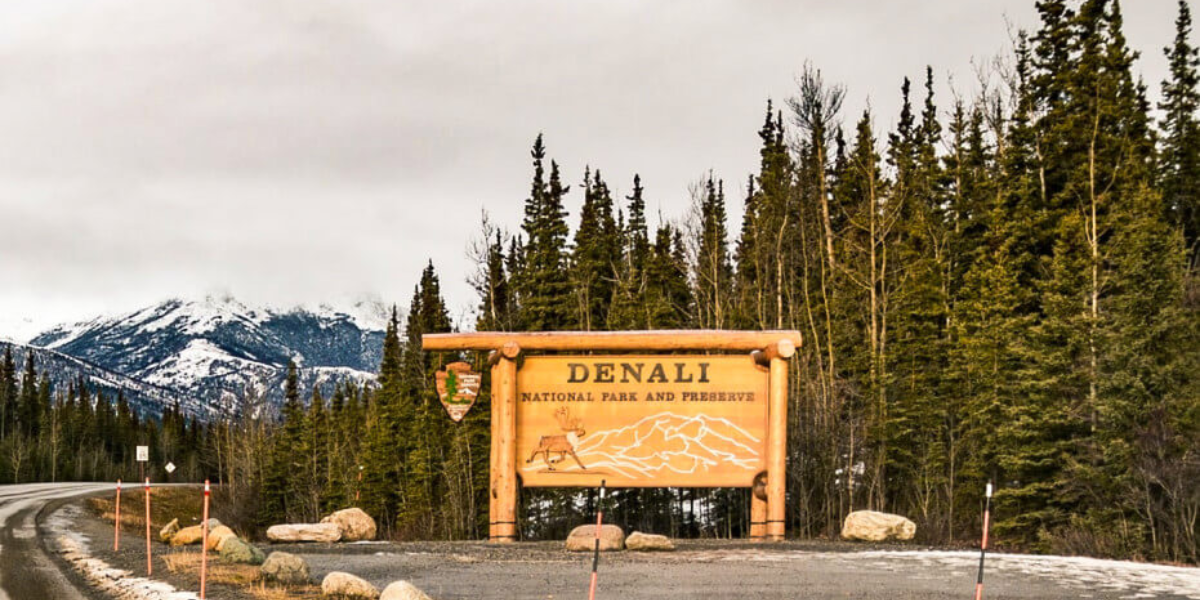
Its wildlife is equally diverse, featuring the “Big Five” – grizzly bears, wolves, caribou, Dall sheep, and moose. These animals roam freely, often visible against the backdrop of the rugged terrain.
Birdwatchers can also delight in spotting golden eagles and ptarmigans. A highlight for visitors is the Tundra Wilderness Tour, an immersive experience providing opportunities to observe wildlife and appreciate the park’s natural beauty.
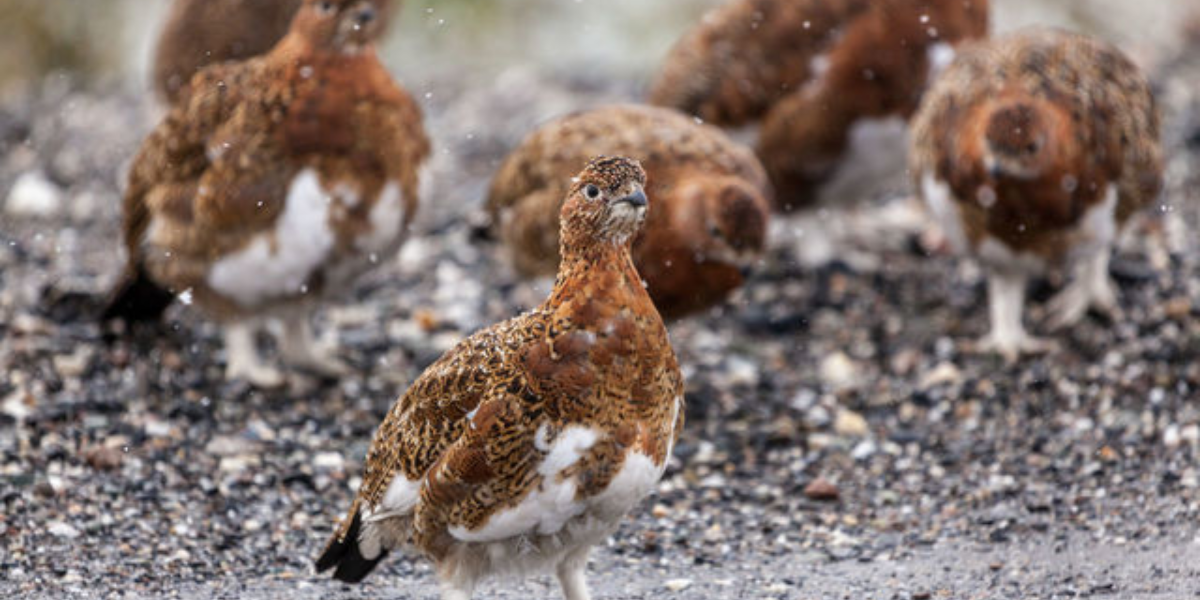
For tourists, the Eielson Visitor Center, accessible via the Denali Park Road, serves as a prime spot for wildlife viewing and learning about the park’s ecology. Additionally, the Tundra Wilderness Tour offers a chance to spot interesting, and rare wild animals.
8 Interesting Animals in Denali National Park – (With Interesting Pictures & Best Spot to Find them)
From grizzly bears and majestic moose to elusive wolves and resilient caribou, the Denali National Park is home to many interesting animals that amaze and mesmerize bird enthusiasts and nature lovers.
These are just a few names of interesting animals in Denali National Park, there are more interesting animals in Denali National Park which we have given below.
Grizzly Bear
The Grizzly Bear is a subspecies of the brown bear. These are one of the most interesting animals in Denali National Park, and live in the forested and mountainous areas, thriving in habitats where food sources like fish, small mammals, and vegetation are abundant.
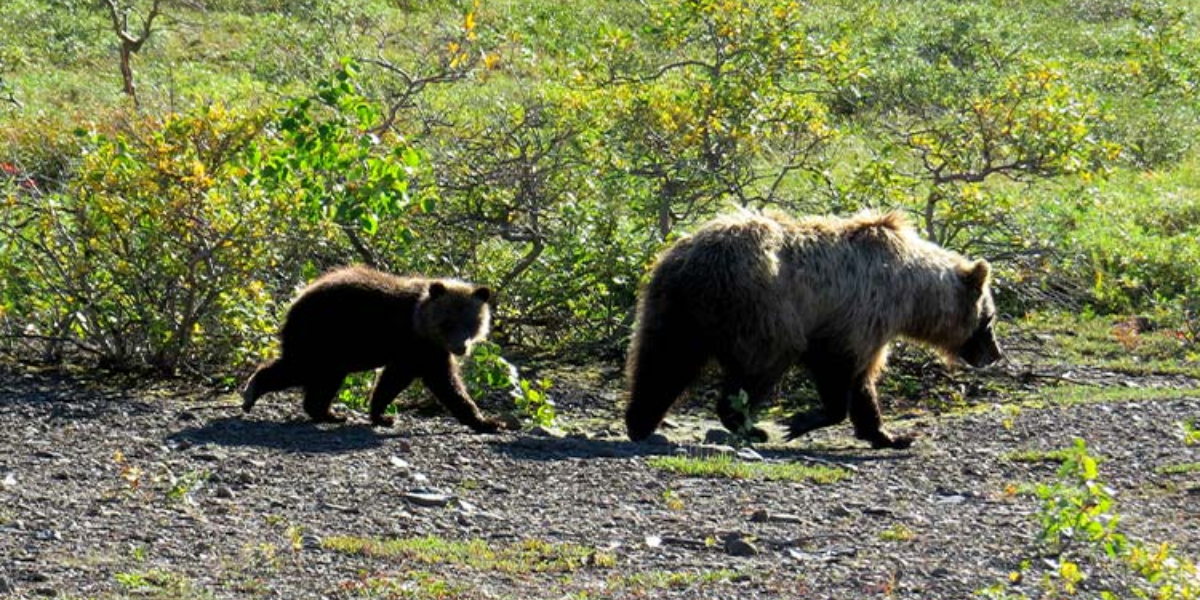
In Denali National Park, Alaska, grizzlies are a prominent and awe-inspiring sight, often seen wandering the park’s vast landscapes of taiga and tundra. Beyond Denali, Grizzly Bears are found in North America, mainly in Alaska, western Canada, and parts of the northwestern United States including Montana, Wyoming, and Idaho.
The best place to spot these wild creatures is the open tundra areas along Denali Park Road, particularly near Eielson Visitor Center and Toklat River.
Sadly, grizzly bears are facing conservation challenges, and they are listed as a species of “Least Concern” on the IUCN Red List.
Dall Sheep/ Thinhorn Sheep
Dall Sheep, known for their distinctive white coats and majestic curved horns, are native to the mountainous regions of North America. They thrive in alpine and subalpine environments, often found on steep, rocky slopes where predators have difficulty reaching them.
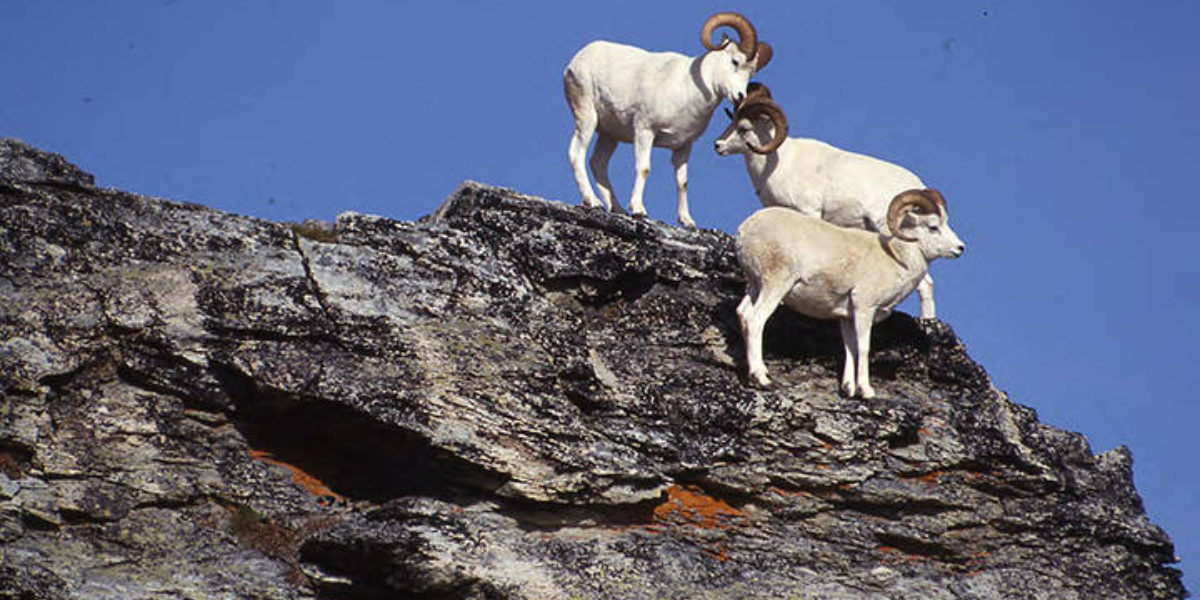
These interesting animals in Denali National Park are primarily inhabitants of the wild, untamed landscapes of Alaska and parts of western Canada.
The Denali National Park, is one of the best locations for observing Dall Sheep, as it offers them a perfect habitat with its rugged terrain and high-altitude pastures.
Visitors to Denali can frequently spot these sheep in areas like Polychrome Pass and along the park’s mountain ridges, where the sheep graze and navigate the cliffs with ease. Moreover, the Dall Sheep are classified as “Least Concern” on the IUCN Red List, indicating a stable population.
State Park in the Denali National Park
Denali National Park, situated in the heart of Alaska, is not only a majestic wilderness in itself but also serves as a gateway to a network of national parks and protected areas. Within its expansive borders lies the Denali Wilderness, offering a pristine and untouched landscape for visitors to explore.

While Denali National Park itself is renowned for its iconic wildlife, towering peaks, and vast tundra, it also provides access to adjacent national parks like Denali State Park.
These interconnected parks collectively contribute to the preservation of Alaska’s unparalleled biodiversity and showcase the breathtaking beauty of the North American wilderness.
Sanctuary River in Denali National Park
The Sanctuary River, meandering through the heart of Denali National Park in Alaska, stands as a pristine waterway surrounded by breathtaking landscapes. This glacial-fed river winds its way through vast expanses of boreal forest and opens into expansive tundra, offering a serene haven for interesting animals in Denali national park.

Sanctuary River in Denali National Park is a haven for diverse wildlife, offering visitors the opportunity to observe several species in their natural habitat. The boreal forest and tundra ecosystems along the river provide crucial habitats for various animals.
Moose, with their imposing presence, are commonly spotted near the riverbanks. Besides it, the Dall sheep, agile and sure-footed, navigate the surrounding mountainous terrain. The sanctuary river also attracts a variety of bird species, including migratory birds and raptors like the golden eagle.
Visitors may encounter smaller mammals such as arctic ground squirrels and red foxes. Additionally, the Sanctuary River is a destination for wilderness adventures such as hiking and wildlife viewing.
Moose – Largest Land Animal
Moose, are the largest members of the deer family, and interesting animals in Denali National Park. They are distinguished by their imposing stature and distinctive antlers. They thrive in temperate to subarctic climates, primarily inhabiting forested areas that are rich in water sources like rivers, lakes, and marshlands.
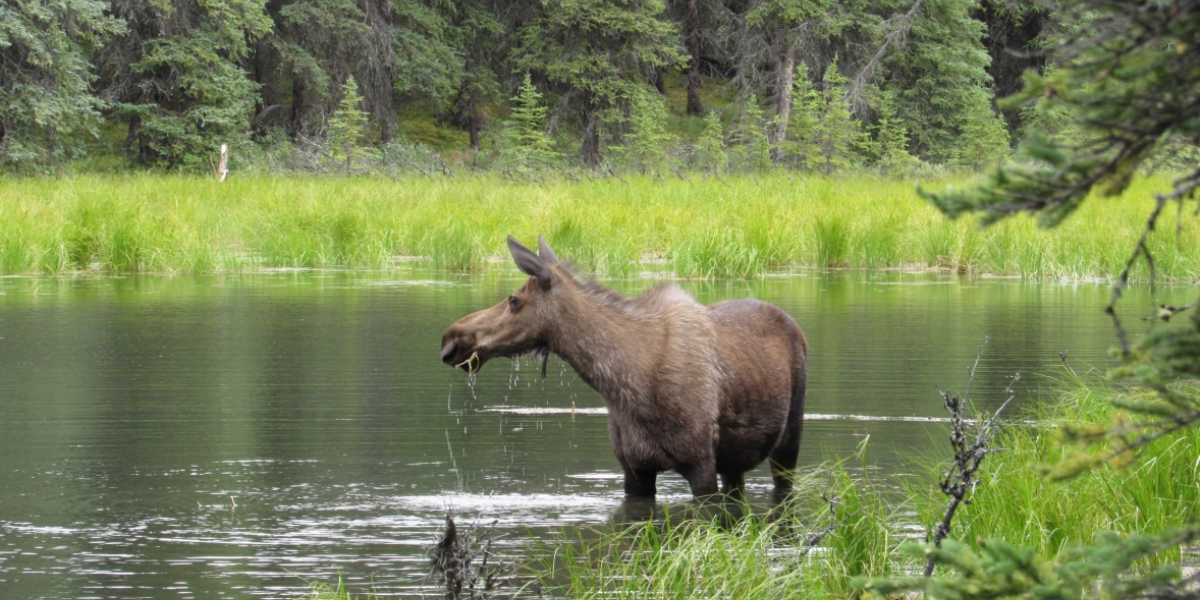
These wild animals are found across the Northern Hemisphere, with significant populations in Canada, the northern United States, Scandinavia, and Russia. Moose are a common sight, often observed in the Denali National Park’s lower elevations and near water bodies.
The areas around Wonder Lake and the park entrance are the best points to observe these animals, especially in the early morning or at dusk. While moose are adaptable and have a broad range, they face challenges from habitat loss and changing climatic conditions in some regions.
However, their conservation status on the IUCN red list is “Least Concern,” which shows their widespread distribution and stable population in most of their range.
Mount McKinley National Park – First National Park to Protect Wildlife
Mount McKinley National Park was established in 1917 and is now known as Denali National Park and Preserve. It spans over six million acres in the heart of Alaska. It is home to North America’s tallest peak, Denali, the park boasts an incredible diversity of wildlife.
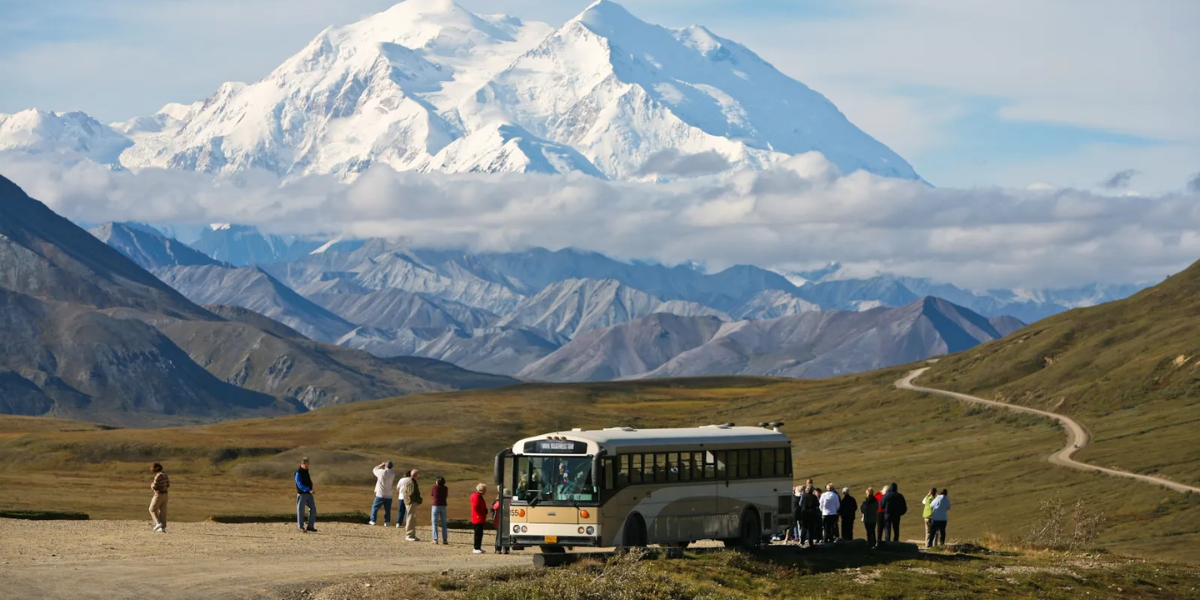
Visitors can encounter grizzly bears, moose, Dall sheep, caribou, and wolves against the backdrop of stunning landscapes. The park is situated in south-central Alaska and offers unparalleled opportunities for wildlife viewing.
Important Safety Guidelines you must follow when visiting to the National Park
It is advised to follow safety guidelines while roaming in the national park. Such as maintaining a safe distance from wildlife and respecting their natural behaviors is crucial for visitors. Other safety measures including carrying bear spray and making noise on trails, are emphasized. You can further study the safety guidelines here.
Caribou Reindeer
Caribou, also known as Reindeer in Europe, are a species of deer adapted to cold environments, ranging across the Arctic and subarctic regions of North America, Europe, and Asia. These interesting animals in Denali National Park are known for their incredible migrations, the longest of any terrestrial mammal.
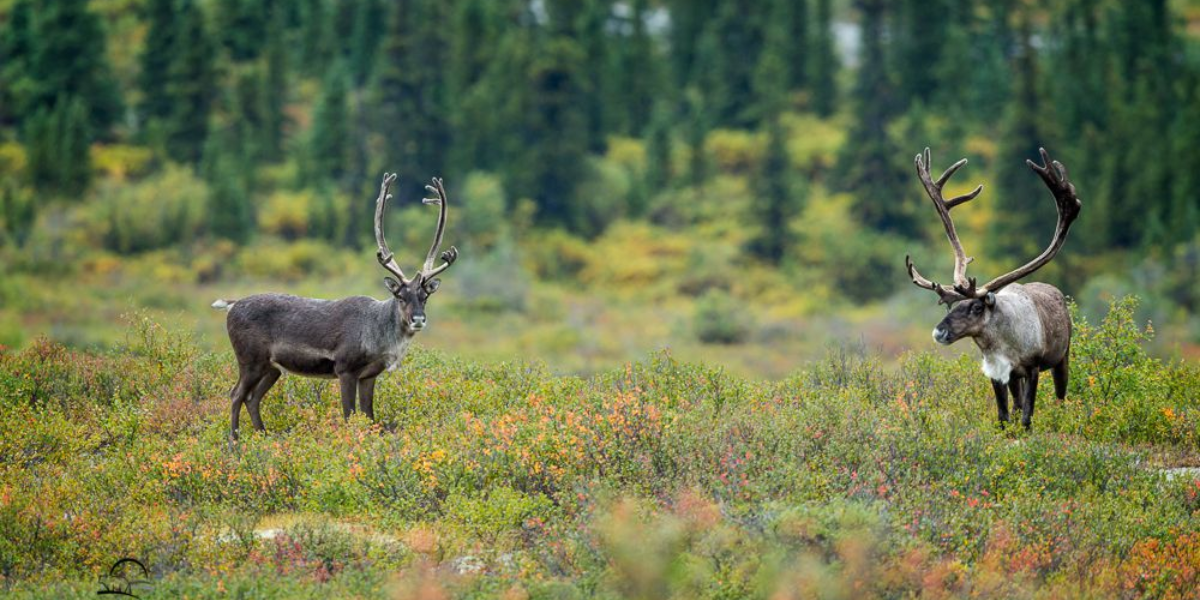
Their natural habitats include traverse tundra, boreal forests, and mountainous regions, showcasing remarkable adaptability. Moreover, the Denali National Park in Alaska is a significant habitat for Caribou, where they are often seen grazing or migrating in groups.
The vast expanses of Denali’s tundra and light forest areas, such as the regions around Wonder Lake, provide excellent opportunities for visitors to observe these majestic creatures in their natural setting.
Additionally, the Caribou are categorized as “Vulnerable” on the IUCN Red List, with certain populations facing significant threats due to habitat loss, climate change, and human activities. Conservation efforts are crucial to ensure the survival and health of Caribou populations across their extensive range.
Snowshoe Hares
Snowshoe Hares are the interesting animals in Denali National Park. These hares are known for their large hind feet and seasonal white fur, and well adapted to the cold, snowy environments of North America.
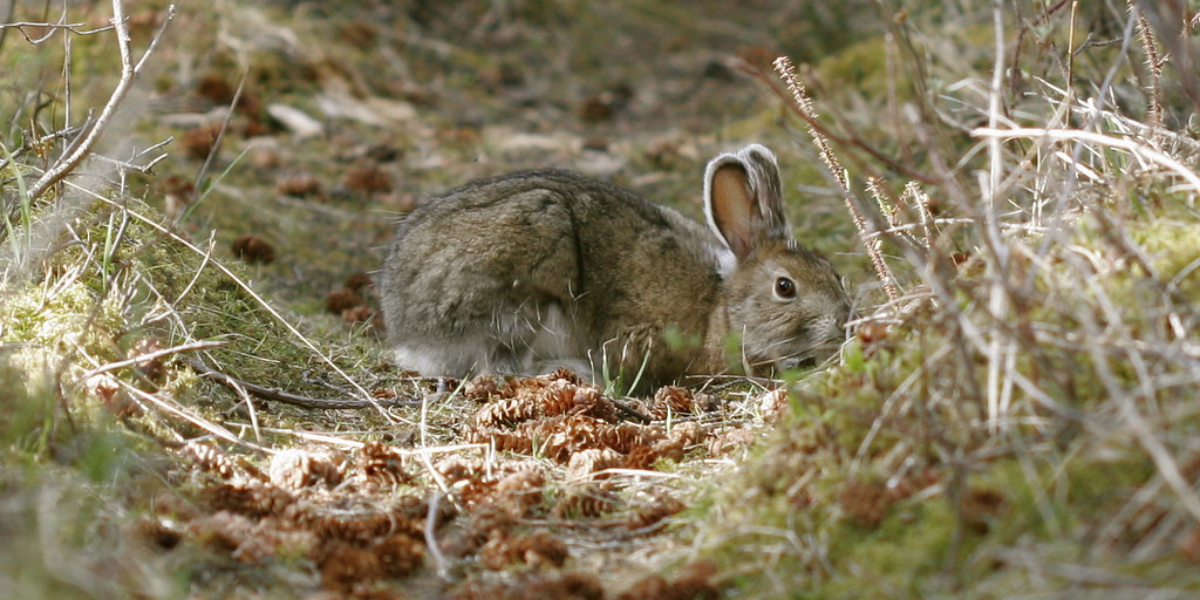
They predominantly inhabit boreal forests and mountainous areas with dense shrub cover, which provides them with necessary shelter and food sources. The snow hares are also found across Canada, and the northern United States, including Alaska, and even extend into the northern parts of the Rocky Mountains.
Snowshoe Hares plays a vital role in the park’s ecosystem. Visitors can spot them in areas with thick underbrush, especially along the edges of forests where they forage for vegetation.
During winter, the fur of snow hares turns white, which helps them in excellent camouflage against the snow. While in summer, it reverts to a brownish color, blending with the forest floor. On the IUCN Red List, Snowshoe Hares are listed as a species of “Least Concern,” indicating a stable population.
Arctic Ground Squirrels
Arctic Ground Squirrels are interesting animals in Denali National Park, and are known for their resilience in extreme cold. They inhabit the tundra and boreal forest regions of North America and Eurasia.
These small, yet hardy rodents are well-adapted to life in harsh environments, from the lowlands to the mountainous terrains.
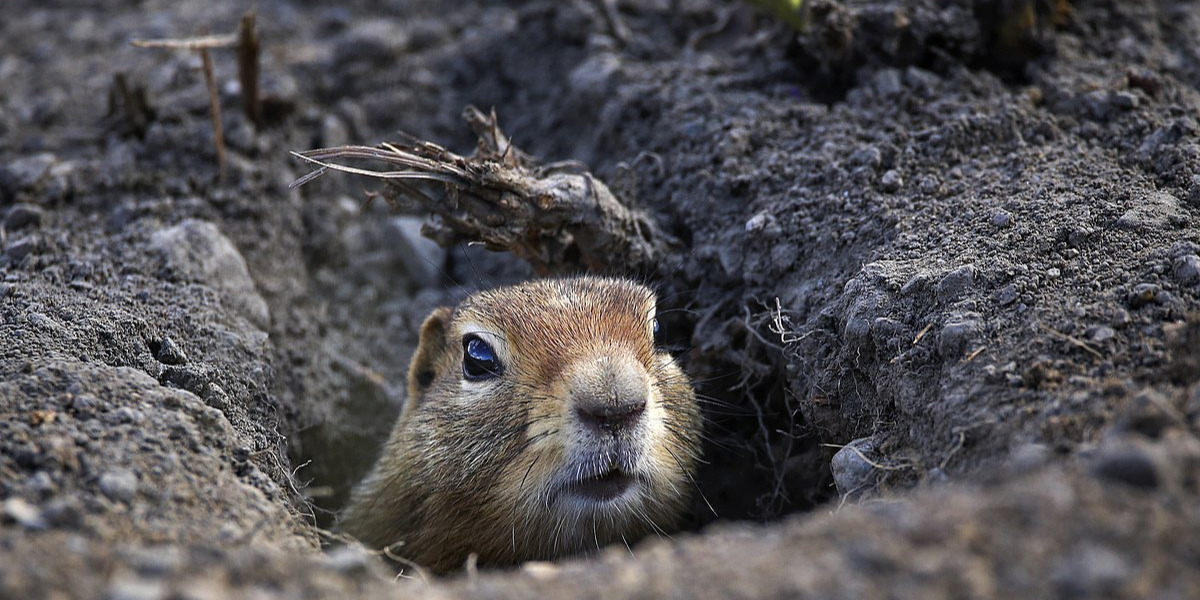
They are prevalent in Alaska, Canada, and Eastern Siberia, thriving in open areas like meadows and river valleys. In Denali National Park, these squirrels are a common sight, especially in open areas with less dense vegetation, where they create their intricate burrow systems.
Furthermore, visitors can spot these squirrels around the Eielson Visitor Center and along the park roads, where they are active during the warmer months. Arctic Ground Squirrels are known for their remarkable hibernation ability, enduring the long, cold winters.
On the IUCN Red List, they are classified as a species of “Least Concern,” indicating a stable population. Their presence in the park adds to the rich biodiversity, offering visitors a glimpse into the adaptability of wildlife in extreme environments.
Golden Eagles
Golden Eagles, majestic birds, are renowned for their impressive wingspan and keen hunting skills. These eagles lives in open and semi-open landscapes, thriving in habitats ranging from tundra to desert terrains.
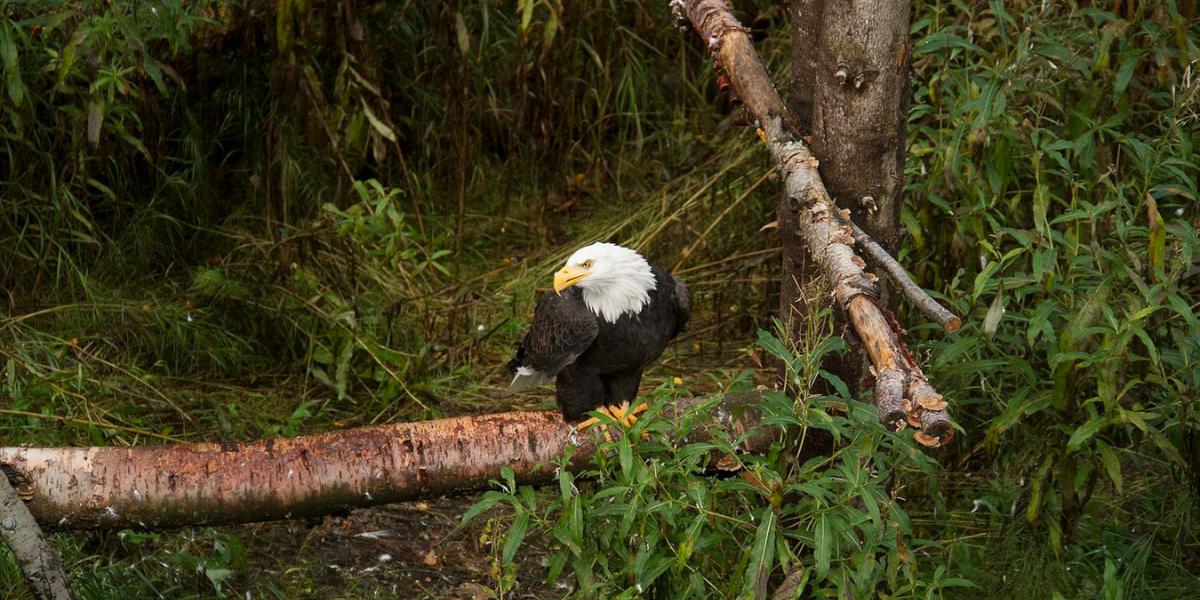
They are widely distributed across the Northern Hemisphere, inhabiting North America, Europe, Asia, and parts of North Africa. In Denali National Park, Alaska, you can spot Golden Eagles soaring gracefully above the park’s rugged terrain.
Moreover, prime spots for golden eagle watching include the higher elevations and cliff sides, where they nest and patrol for prey. Additionally, the Golden Eagle holds a status of “Least Concern” on the IUCN Red List, indicating a stable population overall.
Black Bear
The American Black Bear (Ursus americanus) is a charismatic species widely distributed throughout North America, including the United States, Canada, and Mexico. Their natural habitat encompasses diverse ecosystems such as forests, mountains, swamps, and even urban areas.
Black Bears have adapted to various environments, ranging from temperate rainforests in the Pacific Northwest to deciduous forests in the eastern United States.
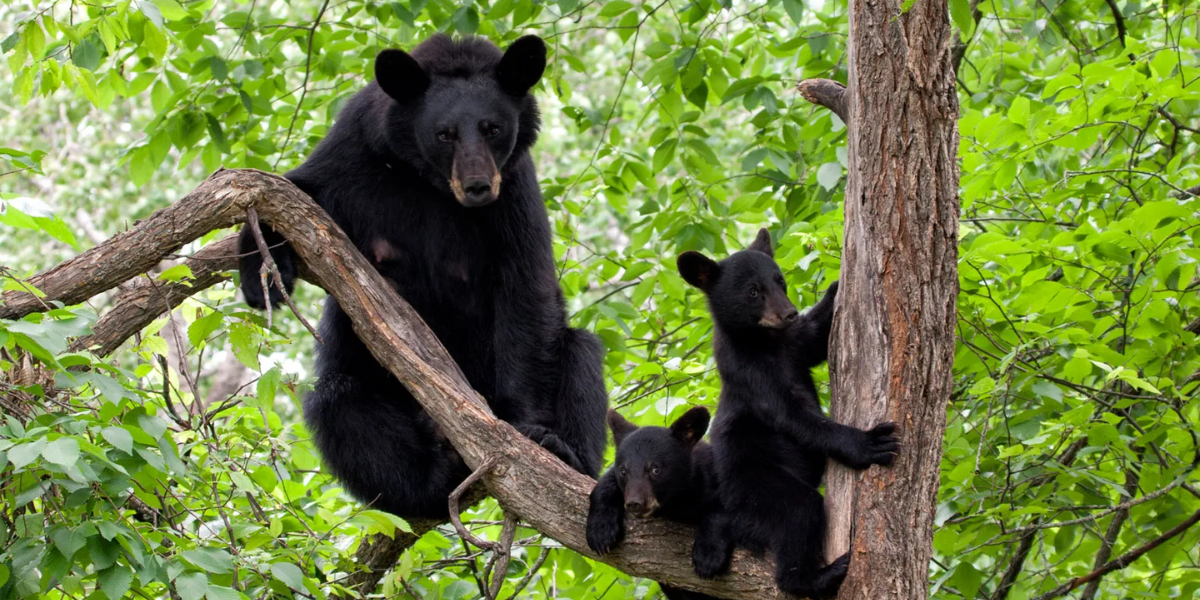
The best spots to find Black Bears are typically in forested areas with abundant vegetation and water sources. They are opportunistic omnivores, feeding on a diet consisting of berries, nuts, insects, small mammals, and occasionally carrion.
Their elusive nature often leads them to remote regions away from human activity, though they may also venture into suburban neighborhoods in search of food.
While the American Black Bear population is relatively stable. These interesting animals in denali national park faces several threats, including habitat loss due to deforestation, urbanization, and human-wildlife conflict.
Despite these challenges, the IUCN Red List categorized the American Black Bear as a species of “Least Concern,” reflecting its adaptable nature and widespread distribution.
Frequently Asked Questions about Interesting Animals in Denali National Park
What are the big 5 animals in Denali?
The big 5 animals in Denali National Park are moose, bears, caribou, wolves, and Dall sheep.
What animals can you find on the Denali?
Some of the most interesting animals in Denali National Park are grizzly and black bears, wolves, caribou, moose, and Dall sheep.
What is the largest land animal found in Denali National Park?
The largest land animal found in Denali National Park is moose, which can weigh over 1200 pounds.
What reptiles live in Denali National Park?
There are no reptiles in Denali National Park, and only one species of amphibian is adapted to the park’s environment.
What animals can you find on the Denali?
Grizzly and black bears, wolves, caribou, moose, and Dall’s sheep are some iconic and interesting animals that you can spot at Denali National Park.
- 12 Interesting Animals in Dominican Republic - 2024-05-02
- 8 Common Dangerous Animals in Yosemite - 2024-05-01
- 11 Interesting Animals in the Midwest - 2024-05-01

